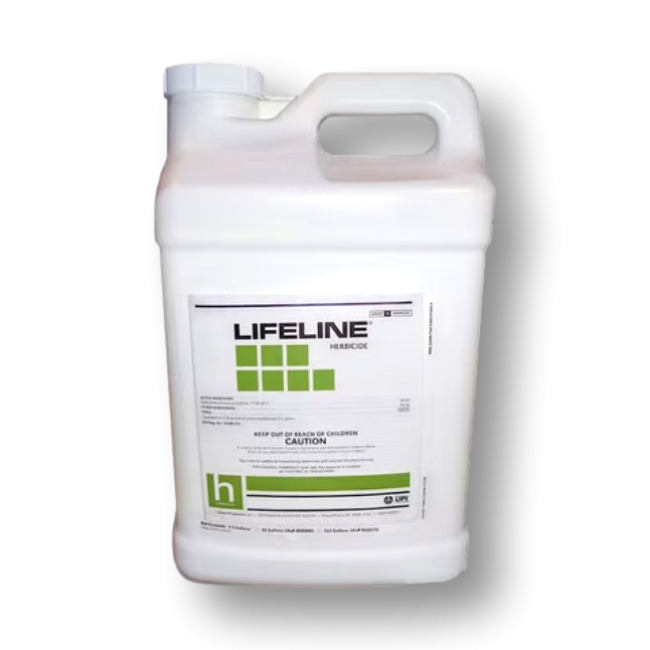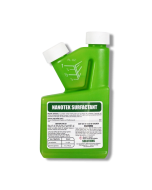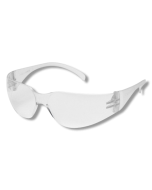Gain access to personalized product screening, the best pricing, rewards, and more!



application2
Lifeline Herbicide
Lifeline Herbicide is a special non-selective, post-emergent herbicide that controls a wide range of challenging broadleaf and grassy weeds in variety of crops.
Lifeline Herbicide, manufactured by United Phosphorous, is a effective non-selective herbicide that offers better control of tough weeds in tree, vines, and berry crops.
Achieves broad-spectrum weed control including those resistant to glyphosate like marestail, hairy fleabane, malva, and filaree with the active ingredient Glufosinate-ammonium 24.5%. Together, its active ingredient and unique mode of action for, the most effective weed control management plan.
Lifeline Herbicide ensures professional farmers and commercial buisness owners maximum land production and profitability with less competing vegetation around military, private, and public lands.
Tools Needed
Apply Lifeline Herbicide with a backpack sprayer, handheld pump sprayer, hydraulic sprayer, or spray rig.
How to Use
- Step 1: Determine how much Lifeline Herbicide to use by measuring the square footage of the treatment area. To do this, measure the length and width of the treatment area in feet then multiply them together (length X width = square footage). For acreage, take the square footage and divide it by one acre (square footage / 43,560 sq. ft. = acres). For farmstead areas, use 48-82 fl. oz. of Lifelife Herbicide in 15 gallons of water per acre. To treat dormant bermudagrass, use 56-82 fl. oz. of product in 80 gallons of water per acre. For weeds that are less than 3 inches in height around tree fruit, tree nuts, vines, berries, and olives apply 48 fl. oz. of product in 15 gallons of water per acre. Refer to the label for specific application rates and restrictions.
- Step 2: Fill the spray tank half full with water then add the measured amount of Lifelife Herbicide. Complete filling the spray tank with remaining half of water. Shake the spray tank until the solution is mixed. If foaming occurs, use a silicone-based antifoam agent.
- Step 3: Apply Lifeline Herbicide to emerged, young, actively growing weeds in broadcast, banded, directed spray or spot treatments. Uniform, thorough spray coverage is necessary to achieve consistent weed control. Avoid direct spray, drift or mist to desirable vegetation, green bark, stems or foliage because injury may occur.
Where to Use
Lifeline Herbicide can be used for pome fruits, citrus, grapes, stone fruit, tree nuts, berries, olives, potatoes, tree fruits, vines, fallow fields, farmstead areas, non-crop areas, public and recreational areas, dormant bermudagrass, ornamentals, and Christmas trees.
When to Use
Apply Lifelife Herbicide when weeds are emerged, young, and actively growing, be sure to target weeds less than 3" in height.
Crops that have been growing for at least 1 year are the only ones that can be treated with this product.
Weed control may be reduced when applications are made to weeds under stress due to drought or cool temperatures
Safety Information
Lifeline Herbicide is safe to use around children and pets when applied according to the product label instructions. Always wear the proper personal protective equipment (PPE) when mixing and applying this product.
Keep people and pets out of treated areas for the next 24 hours after spraying.
Canola, field corn, and soybean scouting will need people and pets to keep out for the next 4 days after application.
Do not graze, harvest and/or feed treated orchard cover crops to livestock.
Special Considerations
Lifeline Herbicide is rainfast 4 hours after application; therefore rainfall occuring before 4 hours have passed may effect the results of weed control and require another application.
| Restricted Use | No |
|---|---|
| Shipping Restrictions | AK, DC |
| Availability | Online |
| Signal Word | CAUTION |
| Keith's Pro Tip | "Because Lifeline herbicide does not provide residual weed control or control of unexposed plant parts, certain herbicide tank mixes may aid in the performance of this product or be added to provide residual herbicide activity." |
| Time to Kill | Lifeline Herbicide will kill weeds within 2 to 4 days after application. |
| Chemical Type | Herbicide |
| Formulation | Emulsifiable Concentrate (EC) |
| Application Methods | Broadcast Spray, Spot Treatment |
| Product Drawbacks | Lifeline Herbicide will not control weeds that appear after application. |
| Active Ingredient | Glufosinate-ammonium 24.5% |
| Application Equipment | Backpack Sprayer, Hydraulic Sprayer, Pump Sprayer, Spray Rig |
| Mix Rate | For farmstead areas, use 48-82 fl. oz. of Lifelife Herbicide in 15 gallons of water per acre. To treat dormant bermudagrass, use 56-82 fl. oz. of product in 80 gallons of water per acre. For weeds that are less than 3 inches in height around tree fruit, tree nuts, vines, berries, and olives apply 48 fl. oz. of product in 15 gallons of water per acre. |
| Use Sites | Outdoors |
| Yield | 2.5 Gallons of Lifeline Herbicide will coverage will depend on the size of the treatment area and its location. |
| EPA Registration No. | 70506-310 |
| Shelf Life | Lifeline Herbicide will last up to 3 years in storage when kept in a cool, dry area. |
| Comparable Products | Interline Herbicide |
| Children or pets? | No |
| Property Characteristics | None |
| Availability | Online |
| Restricted Use | No |
| Brand | UNITED PHOSPHORUS |
| Keith's Pro Tips | "Because Lifeline herbicide does not provide residual weed control or control of unexposed plant parts, certain herbicide tank mixes may aid in the performance of this product or be added to provide residual herbicide activity." |
| Product Drawbacks | Lifeline Herbicide will not control weeds that appear after application. |
| Target Pests | Alkali mallow, Alsike clover, Annual bluegrass, Annual fleabane, Annual ryegrass, Annual sowthistle, Bahiagrass, Barley, Barnyardgrass, Bermudagrass, Bindweed, Black nightshade, Bromus species, Buffalobur, Bull thistle, Bulrush, Burdock, California arrowhead, California burclover, Canada thistle, Canarygrass, Carpetgrass, Carpetweed, Chickweed, Chinese thornapple, Clover, Common chickweed, Common cocklebur, Common groundsel, Common lambsquarters, Common mallow, Common mullein, Common purslane, Common ragweed, Common sunflower, Common yarrow, Crabgrass, Cudweed, Cupgrass, Curly dock, Cutleaf eveningprimrose, Cutleaf groundcherry, Dallisgrass, Dandelion, Dodder, Downy brome, Eastern black nightshade, Eclipta, Entireleaf morningglory, Fall panicum, Fescue, Fiddleneck, Field bindweed, Field horsetail, Field sandbur, Filaree, Fleabane, Giant foxtail, Giant ragweed, Goldenrod, Goosefoot, Goosegrass, Gray goldenrod, Green foxtail, Gromwell, Guineagrass, Hairy nightshade, Harvest aid, Hedge bindweed, Hemp dogbane, Henbit, Ivyleaf morningglory, Jimsonweed, Johnsongrass, Johnsongrass (seedling), Junglerice, Kentucky bluegrass, Knotweed, Kochia, Lambsquarters, Large crabgrass, Leafy spurge, Little mallow, London rocket, Lovegrass, Malva, Manna grass, Marestail, Mayweed, Miners lettuce, Mugwort, Musk thistle, Nettle, Nightshade, Nutsedge, Orchardgrass, Panicle willoweed, Paragrass, Pennsylvania smartweed, Pennycress, Pineappleweed, Pitted morningglory, Plantain, Poa annua, Poison ivy, Poison oak, Prairie sunflower, Prickly lettuce, Prostrate spurge, Puncturevine, Purple ammania, Purple nutsedge, Purslane, Quackgrass, Ragweed, Red clover, Redmaids, Redroot pigweed, Redstem filaree, Ripgut brome, Rubus species, Russian thistle, Ryegrass, Sandbur, Shattercane, Shepherdspurse, Signalgrass, Smallflowered alexandergrass, Smartweed, Smooth bromegrass, Smooth crabgrass, Soft chess, Sprangletop, Stinkgrass, Suckers, Swinecress, Tansymustard, Texas panicum, Toad rush, Torpedograss, Turkey mullein, Vaseygrass, Velvetleaf, Vervain, Vetch, Virginia copperleaf, Volunteer sunflower, Volunteer wheat, Wheat, White clover, Whiteheath aster, Wild buckwheat, Wild mustard, Wild oat, Wild onion, Wild radish, Wild rose, Wild turnip, Windgrass, Witchgrass, Woodsorrel, Woolly cupgrass, Yellow foxtail, Yellow nutsedge, Yellow rocket, and Yellow starthistle. |
| Application Equipment | Backpack Sprayer, Hydraulic Sprayer, Pump Sprayer, Spray Rig |
| Application Methods | Broadcast Spray, Spot Treatment |
| Active Ingredient | Glufosinate-ammonium 24.5% |
| Product Type | Herbicide |
| Formulation | Emulsifiable Concentrate (EC) |
| Application Rate | For farmstead areas, use 48-82 fl. oz. of Lifelife Herbicide in 15 gallons of water per acre. To treat dormant bermudagrass, use 56-82 fl. oz. of product in 80 gallons of water per acre. For weeds that are less than 3 inches in height around tree fruit, tree nuts, vines, berries, and olives apply 48 fl. oz. of product in 15 gallons of water per acre. |
| Shelf Life | Lifeline Herbicide will last up to 3 years in storage when kept in a cool, dry area. |
| Yield | 2.5 Gallons of Lifeline Herbicide will coverage will depend on the size of the treatment area and its location. |
| Use Sites | Outdoors |
| Time to Kill | Lifeline Herbicide will kill weeds within 2 to 4 days after application. |
| Comparable Products | Interline Herbicide |
| Use Caution With | Bentgrass, Bermudagrass, Kentucky Bluegrass, Fescue, Fine, Fescue, Tall, Kikuyugrass, Ryegrass, St Augustine, Zoysiagrass |
| Incompatible Home Siding | Brick, Hardie Plank, Stone Veneer, Stucco, Wood, Vinyl |
| EPA Registration # | 70506-310 |
*Price does not include freight. We guarantee our rate plus shipping will be less than anyone else's price.









